The best user onboarding turns new signups into engaged users and then into paying customers. But if you use the wrong tool, it'll take too long to ship things, constrain what you can build and keep you from achieving the growth you want.
Here are the best tools we've found (and built):
We are happy to share the best user onboarding tools in 2024, according to leading SaaS experts (the Command AI team):
- Command AI – our undeniably unbiased, clearly not motivated by anything other than scientific rigor, top pick; best for a multi-dimensional approach to user onboarding (new user checklists, in-app messaging, surveys, contextual help, and AI chat)
- Arcade – best for interactive onboarding flows
- Intercom – best for integration with human chat (their core product)
- Pendo – best for analytics
- Zendesk – best for a reactive onboarding approach (chat, ticketing, and documentation)
- WalkMe – best for employee (internal user) onboarding
Complimentary tools to take your user onboarding to the next level
- LaunchDarkly – best for feature flags and experimentation
- Highlight – best for session playback
- Segment – best for user analytics
- Thena – best for Slack support management
What user onboarding software was considered?
This is not one of those "Top X tool" lists that includes every possible product in the space or an article that highlights bribes paid advertisements left, right, and center. The goal here is to give you, the reader, a real sense of your options if you're looking to improve user onboarding in your product.
The user onboarding software listed above meet three important criteria that differ from other articles:
- Enables in-app onboarding; this excludes pure email tools (like Mailchimp) and pure documentation tools (like Freshdesk)
- Established customer base (not a buggy up-and-comer)
- High customer satisfaction
You'll notice that most of the user onboarding tools in the list show up in the "Leader" quadrant on G2's (a vendor review platform's) grid for the "Digital Adoption Platform" category. This is their best proxy for user onboarding.
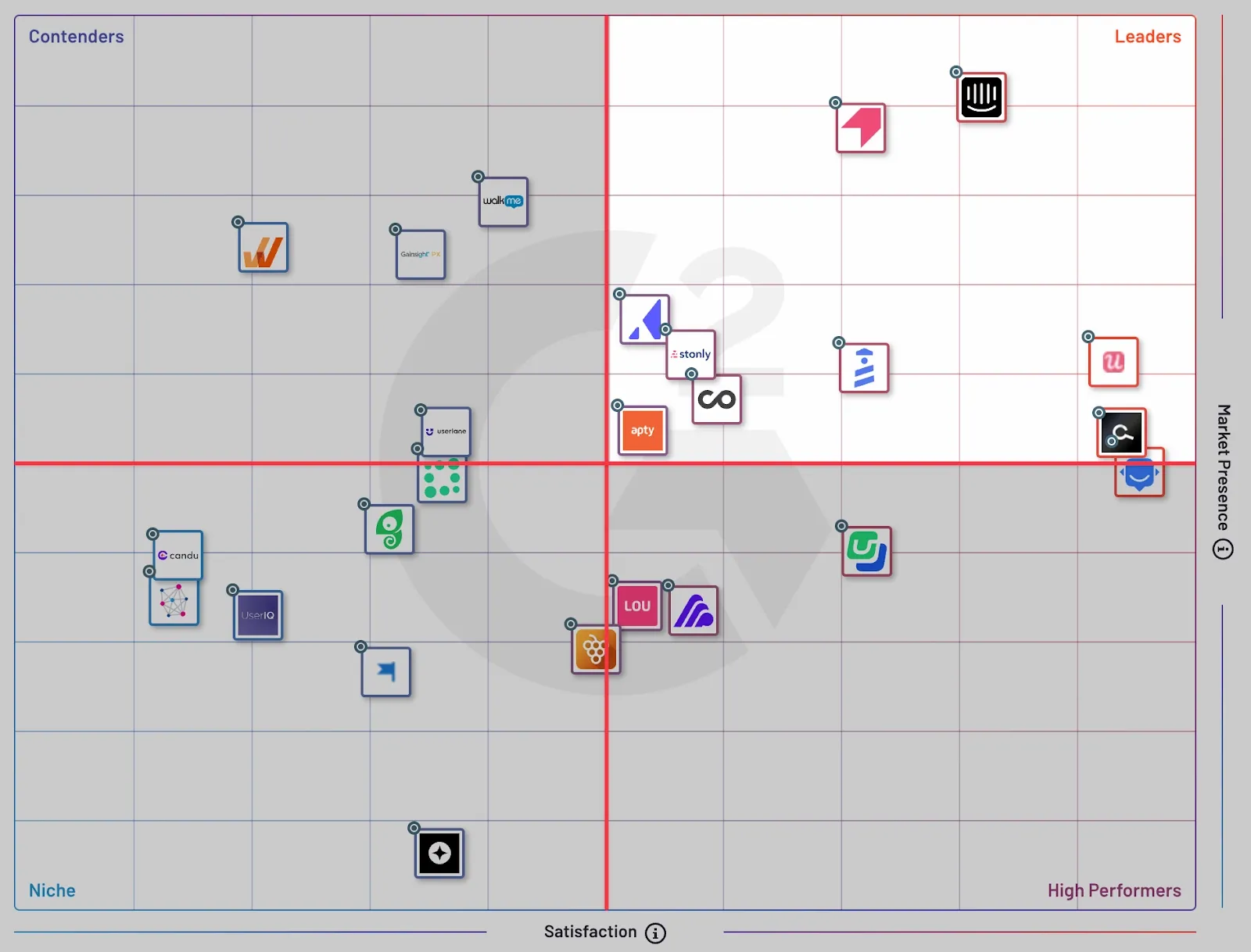
Why does user onboarding matter?
If you already understand the value of user onboarding, feel free to dive right into our tool section.
User onboarding tools are an essential ingredient for product success. By providing users with the right information at the right time, onboarding enables new customers to find success and quickly adopt your product. If you've heard of the term "aha" moment, user onboarding is all about optimizing around that experience, delivering value to new users ASAP. The user onboarding experience can turn churn into retention.
How should I select the right tool for my use case?
This is a really tricky question since there are so many different options on the market, and all of them have convincing marketing content about how they're the best in the game. Not to get too meta, but this is also a marketing piece where we claim to be the best.
There is a wide range of dimensions to consider. The most important ones center your use case (e.g., complexity) and context (e.g., company size, urgency).
- Form factor (the experience your user sees),
- Feature breadth
- Feature depth
- Customization
- Ease of implementation and maintenance
- Pricing
- Analytics
- Free trial
What if I want to go the "DIY" route?
By all means, never limit yourself.
Some companies have a "build everything" mentality, others plug in vendors whenever possible, and many fall somewhere in between.
Why build a user onboarding tool in house?
There are some clear benefits to owning your user onboarding experience from end-to-end:
- Full control of the UX
- Customization
- Great for tricky or less typical onboarding
- Code control and change management
- Potential cost saver
Reasons to not build a user onboarding tool in house?
While the items above are great, there are also massive benefits to using a vendor:
- Easy installation, configuration, and management
- Cross-team involvement; often easier for Product, Growth, Sales, and Customer teams to contribute
- Out-of-the-box analytics
- Integrations
- New features and improvements based on feedback and industry trends (e.g., AI features)
- Consistent cost
Deep dive into user onboarding tools
Finally, we get into the content you came for. We dive into each tool, making sure to cover a few areas.
- Tagline (“best for …”)
- Summary of the tool
- Supported sser onboarding experiences (e.g., checklists, in-app messaging, help, chat)
- Configuration
- Installation
- Pricing (as of August 2023)
Command AI
Our top pick. Best for a multi-dimensional approach to user onboarding.
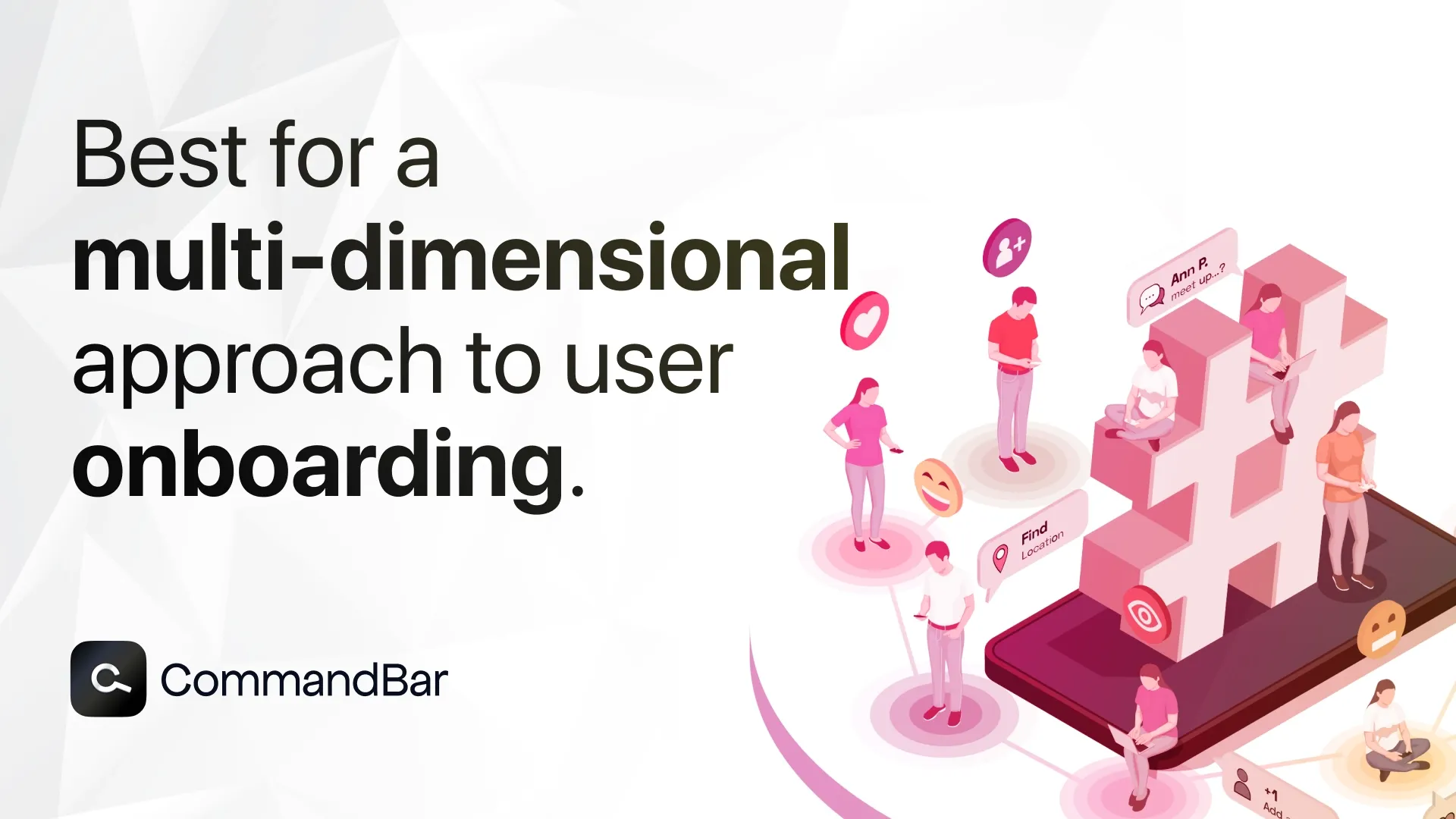
Command AI’s main features are Magic Search, Nudges & Questlists, HelpHub, and AI chat.
1. Magic search: a new age of navigation
Imagine a user who's new to your app and looking for a specific feature. Instead of clicking through menus and getting lost, she simply types what she's looking for into Command AI's Magic Search. Instantly, she's teleported to the exact functionality or content she needs. No more hunting, no more frustration. As a bonus, the user’s search data help you understand user intent and prioritize features.
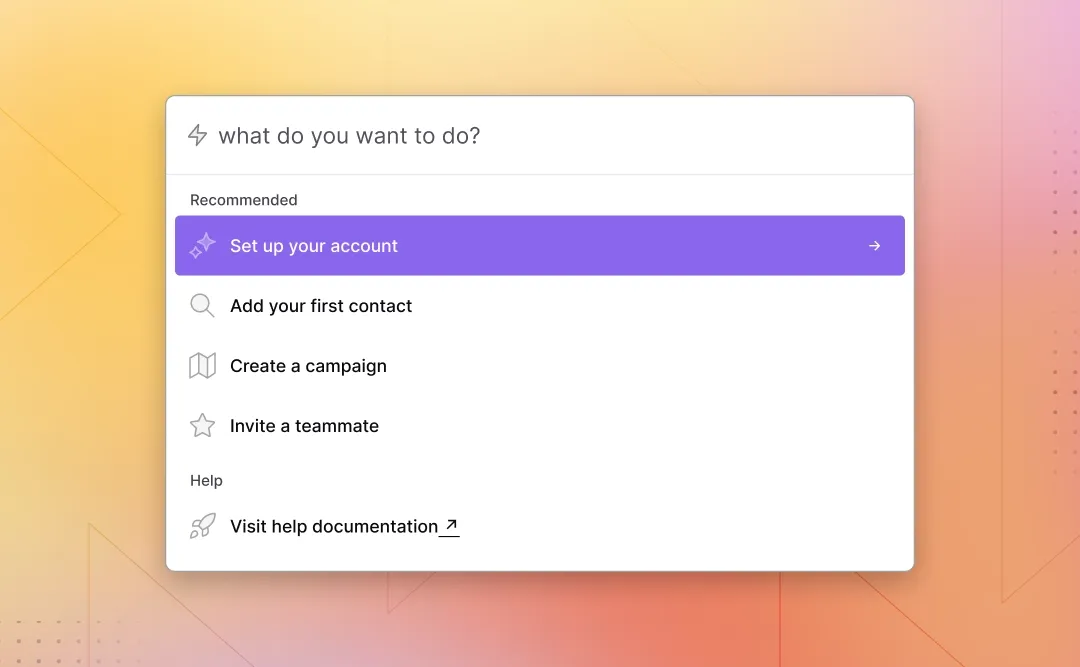
2. Nudges & questlists: guided discovery
A user logs into your product for the first time . He's greeted with a “nudge” announcing a new feature tour.
Intrigued, he follows the multi-step tour, with videos and rich text, to learn about common use cases.
Later, he encounters a checklist that walks him through a series of steps to take advantage of the new feature.

These guided interactions make the re-onboarding experience delightful and efficient.
3. HelpHub: instant assistance
A user is struggling with a particular task in your app. Instead of leaving the app to search for help, she accesses the HelpHub widget. There, she finds a modal with your help articles, blogs, and videos, all searchable in-app. Even if she doesn't use the exact terms that your product uses, natural language search ensures she finds what she needs. Her problem is solved without ever leaving the app and without having to open a support ticket.

- Copilot: empowered self-service
A user is in the middle of their trial and has a complex question about implementing your product. He turns to Command AI's Copilot, where he interacts with a chatbot trained on your website, docs, and SDK. Alex asks for a code snippet to achieve the functionality he needs, and the AI brilliantly delivers the code he is looking for while referencing the source material so he can dive deeper into the relevant details.

Command AI isn't just a tool; it's a comprehensive platform that redefines user onboarding. By understanding and catering to the unique needs of each user, it turns the ordinary into the extraordinary, making your product not just easier to use but a joy to explore.
We've built it with the user in mind - empower them to command your product and you'll actually get better results for both of you!
Supported user onboarding experiences
- Checklists
- In-app messages
- Product tours
- Surveys
- Action + content search
- HelpHub (knowledge base search)
- AI chat
Configuration
Command AI configuration primarily happens from the “Studio,” a space dedicated to building, tweaking, and experimenting with various onboarding experiences and customization options.
Command AI also offers a Chrome extension that allows admins to simulate onboarding flows from the user’s perspective inside the product.
Installation
Command AI can be installed with a code snippet – a single copy + paste.
Pricing
Command AI offers three price tiers for both the Nudge and Copilot product, all of which are customize to your needs and size.
Arcade
Best for interactive onboarding flows

In the world of product storytelling, Arcade is a new product that has emerged as a game-changer, empowering thousands of teams to create interactive, polished demos. The best part is that they are product-real and straightforward to create. Admins use Arcade’s Chrome extension to record the screen as they click, scroll, and pan through flows in their product.
Arcade's functionality is designed to simplify and enhance the creation of product demos. Some of the standout features:
- Pan and zoom to guide viewers' focus without hours of post-production.
- Callouts add interactive tooltip-style messages in demos.
- Blur covers confidential content.
- Chapters break demos into sections to create a storytelling dimension.
- Hotspots provide interactive guidance to teach your product’s UI/buttons.
- Live assets offer flexibility for quick changes.
Together, these features form an awesome tool that elevates the demo experience. Arcades allow you to convey your product’s value while also teaching core functionality.
Supported user onboarding experiences
- Interactive demos
- Interactive video guides
Configuration
There are two pieces to configuration:
- Recording the demo or product flow with their Chrome extension. It’s as simple as starting the recording, executing the demo/flow, and then ending the recording.
- Editing the recording to insert hotspots, messages, etc.
Installation
Arcades can be added to your product via embed code.
Pricing
Arcade offers four tiers (direct link):
- Free: $0/month – single user, three published Arcades, branded
- Pro: $32/month – single user, unlimited Arcades, whitelabeled, and high quality
- Growth: $42.50/month – multiple users, unlimited Arcades, suite of editing and collaboration functionality
- Enterprise: custom pricing – everything in Growth as well as SSO, enterprise security, top-tier support, and insights exports
Intercom
Best for integration with human chat (Intercom's core product)
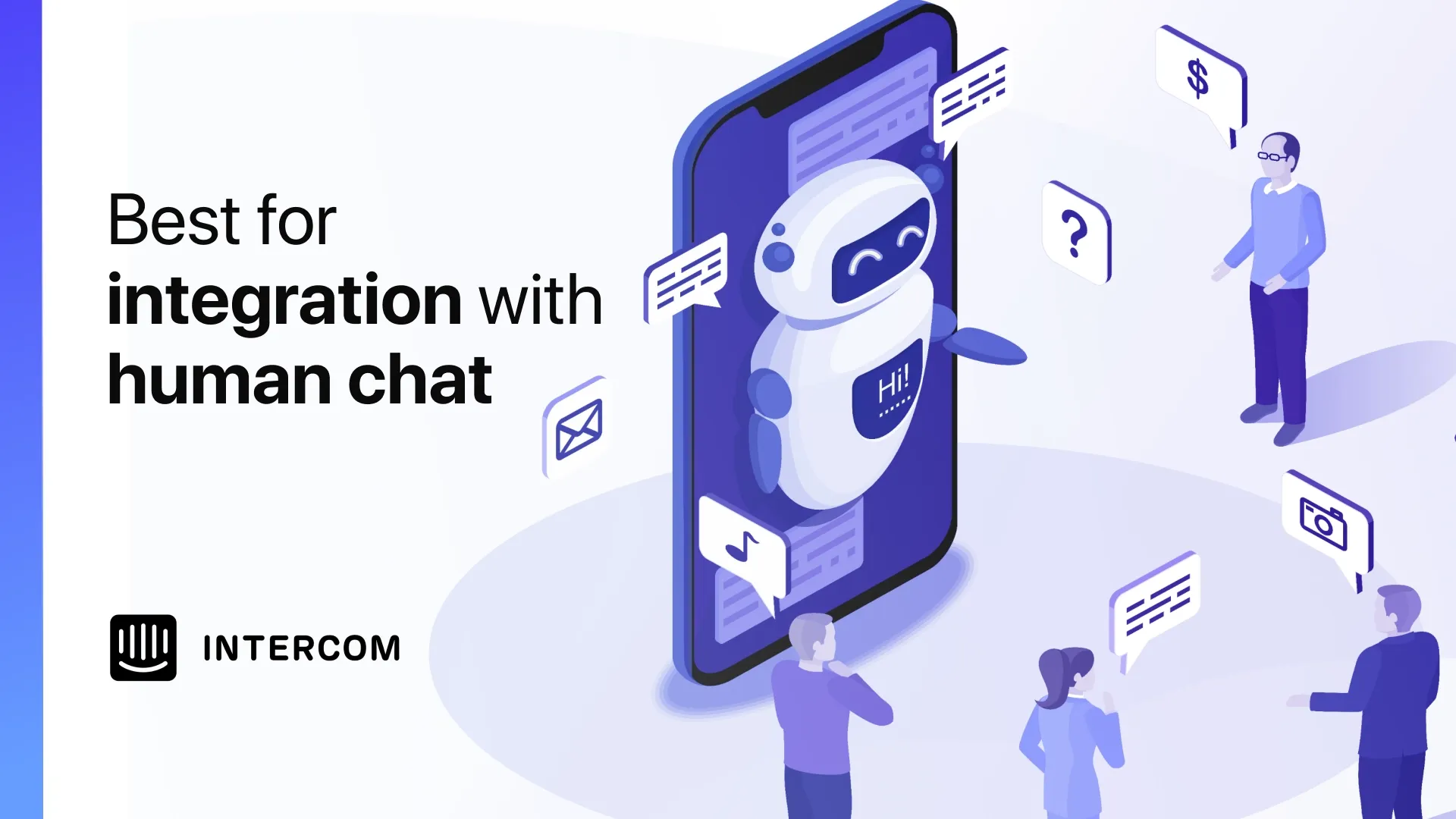
Intercom started as a pure chat app (“Intercom Messenger”) back in 2011, but has evolved into a massive product, with tools that help onboard and interact with users. A cool part about Intercom’s onboarding tools (e.g., product tours and messages) is that they can be sent via chat when relevant to a user’s question.
Intercom's functionality is crafted to streamline and enrich user onboarding. Some of the standout features:
- Messenger: Their chat offering enables sync and asnyc communication with users, answering questions and guiding them through the initial stages.
- Product tours: Creates interactive walkthroughs that guide users through key features and functionalities.
- In-app messages: Allows admins to send personalized messages based on user behavior or segmentation, enhancing engagement.
- Help center: Offers in-app access to help articles and FAQs, reducing user confusion without leaving the platform.
- Analytics: Provides insights into response times and user behavior.
Supported user onboarding experiences
- In-app messages
- Product tours
- Knowledge base
- Chat
Configuration
Intercom has a combination approach. Some of their products, like chat and their knowledge base, are managed from their application. Other in-app form factors (e.g., product tours) are configured via an in-app designer where you can select elements you want to highlight and style your experience.
Installation
Intercom is installed via a code snippet. Further customization requires custom code.
Pricing
Intercom has three tiers, but no free tier (pricing link). Checklists, product tours, and in-app messages need to be purchased as add-ons for whichever tier you select. Pricing for these add-ons is not available publicly.
- Starter: $888/year (no monthly pricing) – chat and knowledge base
- Pro: custom pricing – more chat, support, and security features
- Premium: custom pricing – same as Pro as well as support SLAs, custom analytics and reporting, real-time dashboard, and more
Zendesk
Best for a reactive onboarding approach (chat, ticketing, and documentation)
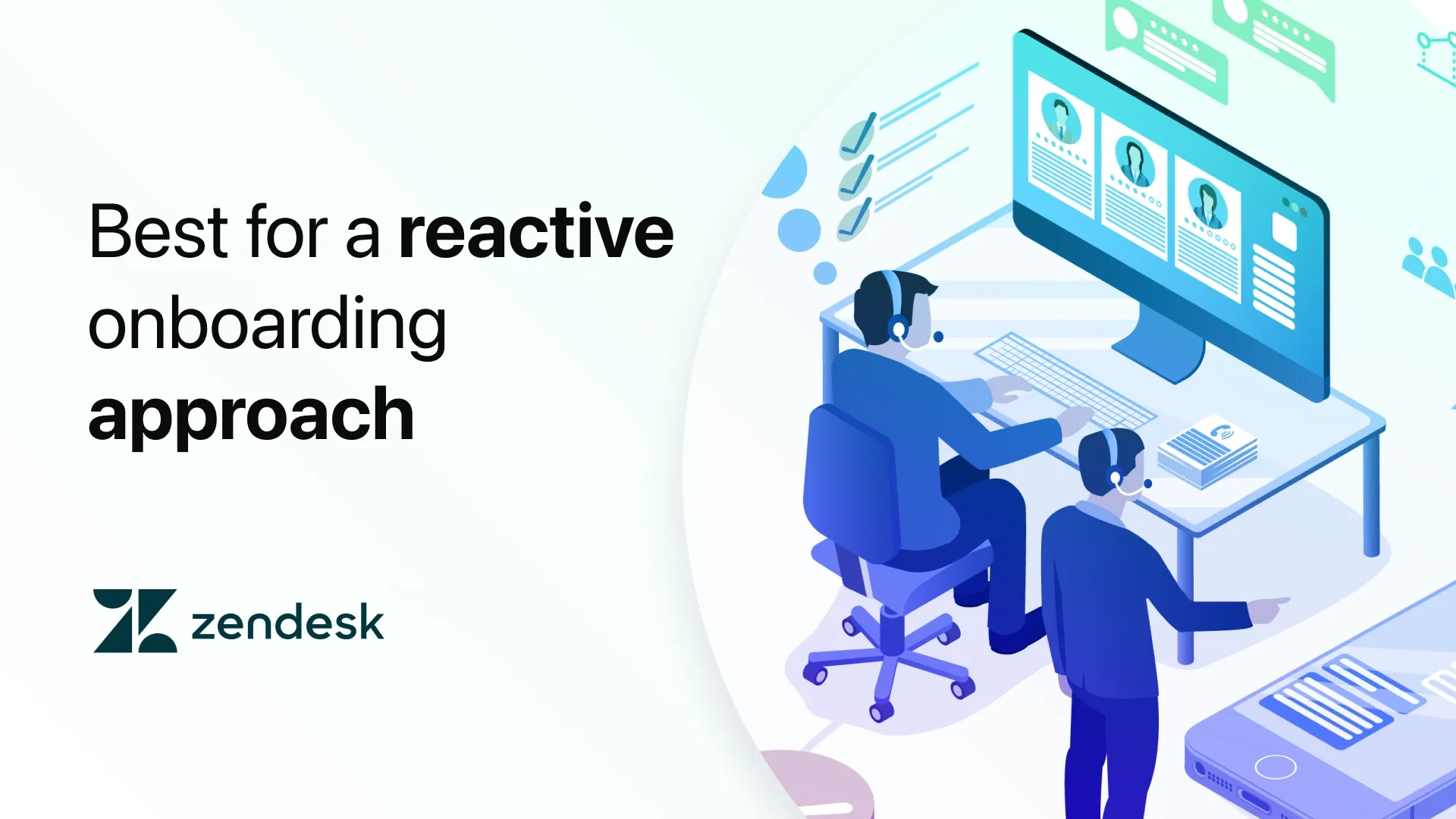
Zendesk is a great tool for customer service. It offers a viable solution for businesses to connect with and onboard their users, albeit a rather reactive one. Their primary onboarding tool is a chatbot that allows new (and existing) users to ask questions and get help from a human or from AI. Zendesk has a ticketing system for keeping track of and responding to user inquiries. They also have a knowledge base offering.
Zendesk might sound similar to Intercom, but their solution is geared toward customer success and support. On the other hand, Intercom’s toolset has more of a sales and marketing lean. For example, it’s common to find Intercom’s chat widget on a company’s pricing page. Zendesk’s chat widget is almost purely used in-app (outside of sales/marketing pages).
Some of Zendesk’s standout features:
- Live chat and messaging: Offers real-time communication with users, providing immediate assistance during the onboarding process.
- Knowledge base: Create, manage, and host articles, guides, and FAQs, to help users find answers to their questions.
- Automated workflows: Enables the design of automated support processes that guide users through common issues or onboarding steps.
- Multi-channel support: Unifies customer interactions from chat, email, phone, and social media, providing consistent support across all channels.
- Performance analytics: Provides insights into support effectiveness, user satisfaction, and onboarding success, allowing for continuous optimization.
Supported user onboarding experiences
- Chat
Configuration
All Zendesk configuration is managed from their application.
Installation
Zendesk is installed via a code snippet. Further customization, like dynamic messaging, requires custom code.
Pricing
Zendesk offers four tiers (pricing link); their pricing is slightly cheaper on annual plans:
- Suite Team: $69 per agent/month – ticketing system, cross-platform support channels, help center, basic analytics, and more
- Suite Growth: $115 per agent/month – same as Suite Team plus SLA, CSAT, multilingual support, self-service portal, and more
- Suite Professional: $149 per agent/month – same as Suite Growth plus custom analytics, side conversations, skills-based routing, community forums, and more
- Suite Enterprise: custom pricing – same as Suite Professional plus AI features, contextual workspaces, and custom agent roles
WalkMe
Best for employee (internal user) onboarding
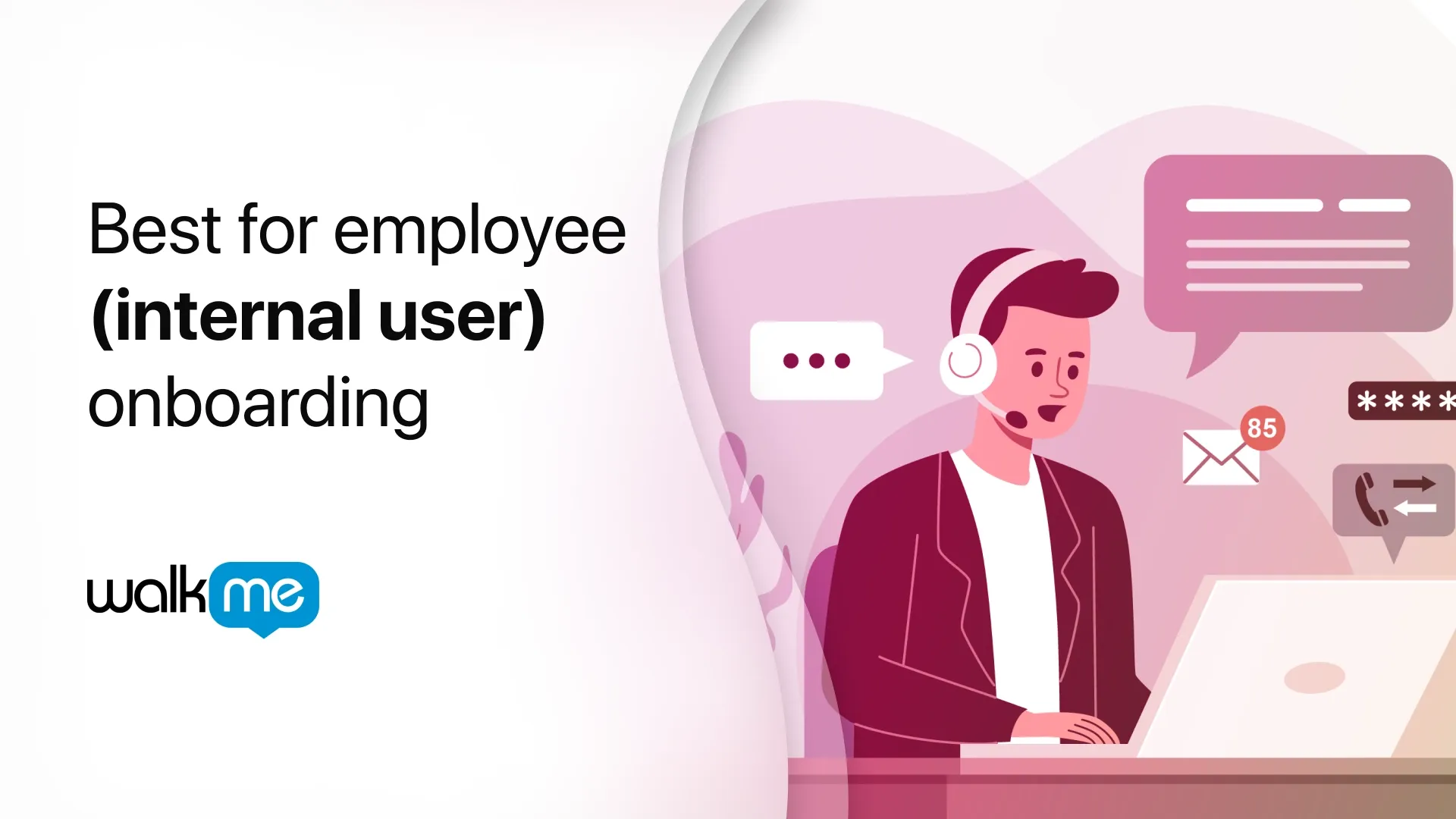
WalkMe is a robust software platform with a wide variety of products. Within the user onboarding space, they emerge as the clear best for internal user onboarding. While they offer customer-facing onboarding as well, their solution is very similar to others on the market.
Their tooling is designed for enterprises and companies with complex processes. WalkMe’s AI-powered digital assistant allows companies to create tailor-made onboarding experiences that are unique to their brand. Smaller companies might find WalkMe too expensive and/or too cumbersome to maintain.
WalkMe’s approach toward internal user onboarding has three stages
- Data collection: understand what users are doing, especially where they are struggling
- Issue resolution: fix any bugs or broken processes
- Walkthrough (Walk-Thru) creation: create walkthroughs that help users solve their problems and/or increase process efficiency
Supported user onboarding experiences
- Product/process tours
- Chat
Configuration
Walk-Thru’s are created via an in-app editing system, which just requires a Chrome extension. You can set element anchors, goals, positioning logic, styling, and more.

Installation
WalkMe is installed via a code snippet. Further customization requires custom code.
Pricing
WalkMe’s pricing is all custom – custom plans and prices.
Complementary tools to enhance user onboarding
Implementing a user onboarding tool is a great start, but it’s not enough. A single tool often falls short of addressing the multifaceted challenges and opportunities that arise. It's a dynamic puzzle where deep understanding, engagement, responsiveness, and continuous improvement are critical. Pairing a user onboarding tool with complementary solutions like feature flagging, session playback, customer analytics, and customer support creates a powerful ecosystem.
This integrated approach ensures that every aspect of the user's journey is monitored, analyzed, and optimized. From introducing battle-tested features with precision to understanding user behavior, from analyzing conversion drivers to providing high-quality, real-time support, this combination of tools turns the complex process of onboarding into a finely-tuned, responsive, and effective operation. It's not just about making a good first impression; it's about laying the foundation for ongoing success and satisfaction.
LaunchDarkly
Best for feature flags and experimentation

LaunchDarkly is a vital ally for companies aiming to refine and optimize their user onboarding. By leveraging feature flags, LaunchDarkly empowers businesses to test, iterate, and deploy new onboarding features with precision and agility. Rather than debate product changes excessively, teams are able to increase product quality by shipping experiments as needed.
Take Jasper, for instance. They have harnessed the power of feature flags to conduct rapid onboarding experiments. By toggling feature flags, Jasper can introduce new onboarding elements to specific user segments, analyze their impact, and make real-time adjustments. If a particular feature resonates with users, it can be rolled out more broadly; if not, it can be dialed back without affecting the entire user base. This approach not only accelerates the testing process but also ensures that each user's onboarding experience is tailored and effective. With LaunchDarkly, the path to perfect onboarding isn't a distant goal; it's an ongoing, dynamic journey that is driven by data and guided by responsiveness.
Highlight
Best for session playback
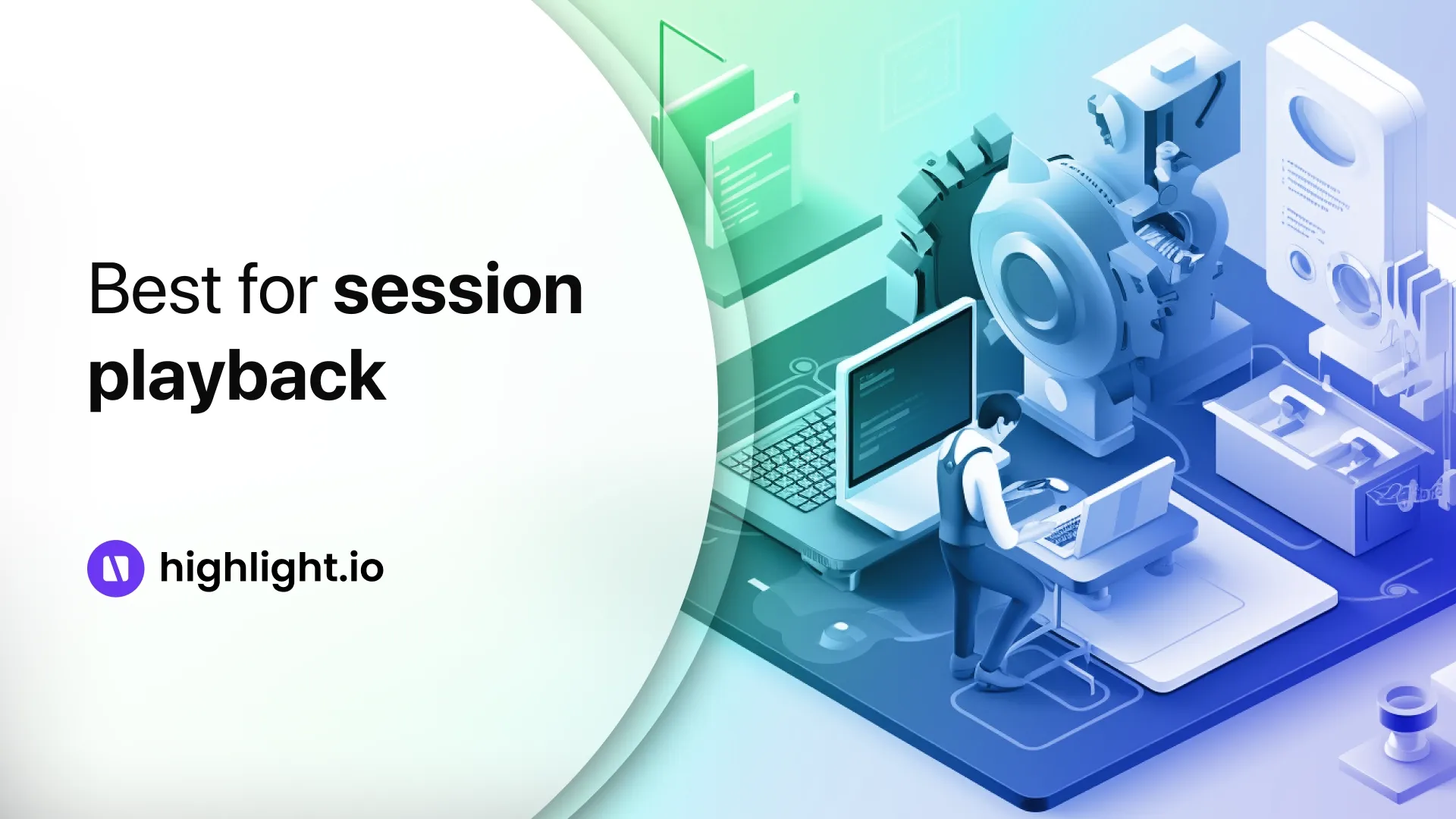
Through session playback and event analysis, Highlight provides a granular view of how users interact with a product, uncovering pain points, bugs, and areas for improvement. It's not just about watching; it's about understanding and empathizing with the user's journey, turning user sessions into a form of film study that produces actionable strategies that enhance onboarding.
At Command AI, for example, we have fully leveraged Highlight to refine our user onboarding process. By reviewing session playbacks, we painfully witness where users stumble or become confused. We can identify specific elements that hinder the onboarding experience, whether it's a design flaw, a bug, or an unclear instruction. Event data paired with user segmentation further allows us to dig into user interactions, pinpointing trends and patterns that might otherwise go unnoticed. This deep dive into user behavior enables the team to make data-informed improvements. We can also reach out to prospects and customers once observed issues are resolved. Issues that might have caused prospects to churn are instead turned into opportunities for organic engagement and growth.
Segment
Best for user analytics
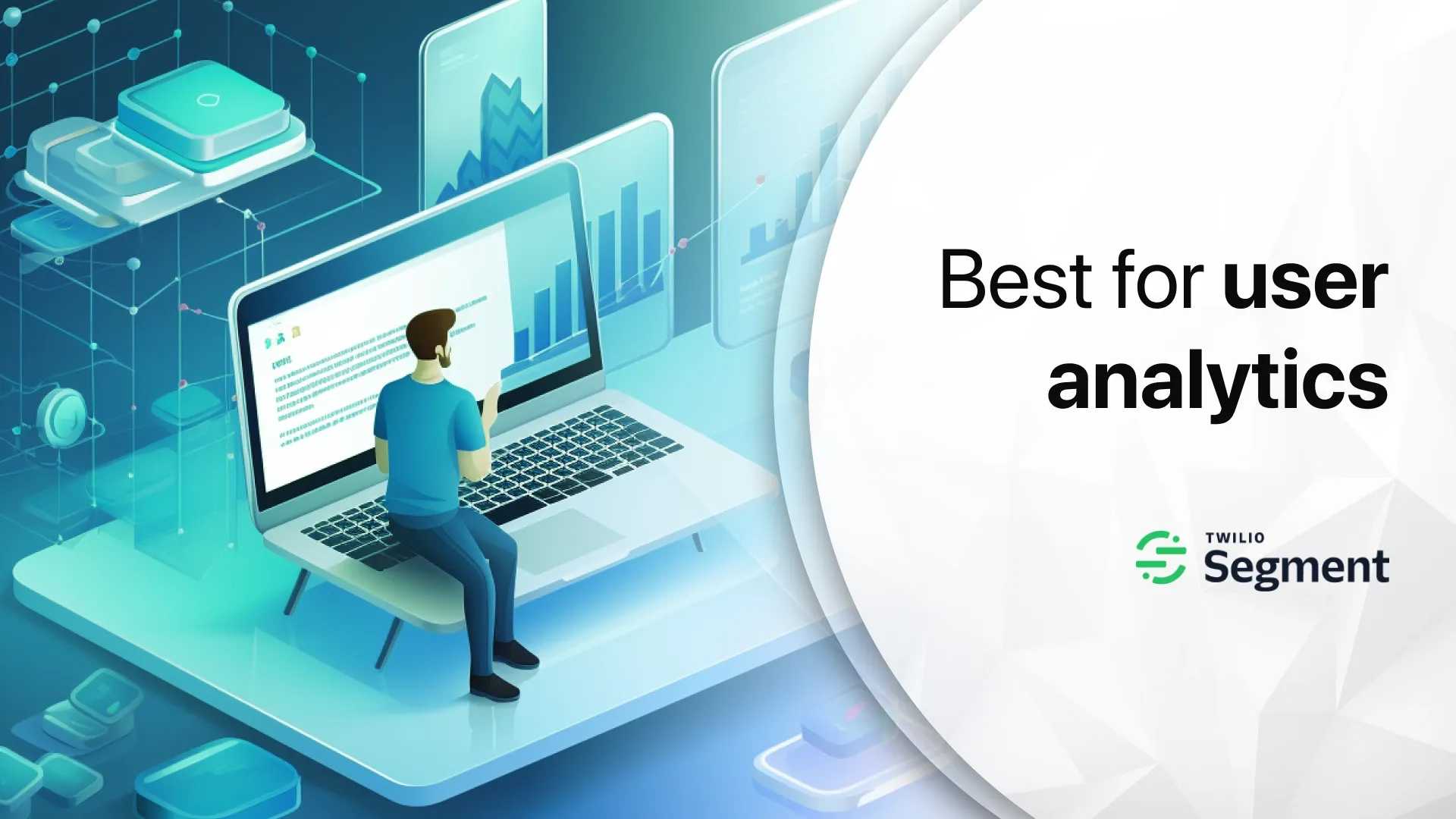
Segment is a vital tool for companies that care about user onboarding. Segment provides basic analytics by default and can be customized to give full insights into the most granular usage data. After collecting this data, companies can unify and route the data into any system (e.g., BI tool) to dig into the ins and outs of their product.
For example, this data can reveal user frustration, feature adoption, and common drop-off points. Companies can identify not only where users might be struggling but also which features are driving conversions. For example, a sudden drop-off after a specific onboarding step might reveal a confusing element that needs refinement, while a strong correlation between a feature's usage and user conversion might highlight an area to emphasize in the onboarding process. Segment's ability to integrate and analyze these insights allows companies to craft onboarding experiences that are intuitive and aligned with business goals. It's a smart approach to onboarding that turns raw data into actionable intelligence, paving the way for user engagement and success.
With that said, we recognize that Segment is not cheap. If you’re interested in exploring an analytics platform at a lower price point, consider one of their competitors.
Thena
Best for Slack support management

User onboarding is obviously critical in-app, but it’s also important to consider the traditional support piece to onboarding. Traditionally, companies have relied on phone support, which gave way to email support, which then moved to chat support (think Zendesk chat and Intercom Messenger).
Today, the support landscape is starting to shift again. Many companies now offer support via Slack. Savvy startups have realized that they can differentiate from competitors by creating direct channels with prospects and customers in Slack. Why Slack? It’s the messaging tool of choice for many tech companies, so it is (for better or worse) where many employees spend a significant portion of their work day.
The trouble is that this form of support can be extremely challenging to scale since Slack is not purpose-built for support. Thena is specifically tailored to address this gap. Thena streamlines the process by funneling new messages into a single channel and by sending reminders for messages that haven’t been resolved. This helps ensure that questions are promptly addressed and that no items slip through the cracks. Their AI features for auto-tagging, sentiment analysis, and urgency analysis are useful for prioritizing tickets. As a result, Thena’s customers are able to create a sophisticated support system in Slack, where prospects and customers feel they are getting the personalized attention and care they deserve.
Bonus: Fullview
Best for cobrowsing
For those unfamiliar with the term, "cobrowsing" is a relatively new concept. Cobrowsing, or collaborative browsing, makes it possible for your team and your users to be as close to "on the same page" as possible. There are obvious benefits for customers since they can get questions and issues resolved faster.
Fullview is able to auto-record all user onboarding sessions. This is great for quickly identifying users who are struggling to make progress or who begin to show signs of frustration like "rage clicks", which are auto-detected. Once identified, the team can initiate a cobrowsing call, understand where the user is hitting friction, and get control of the user's screen as needed to help them. While you could just schedule a Zoom meeting, calling users directly in app is great because it helps customers get their issue or question resolved more quickly. For products with a steep learning curves, this is also a great forcing function to brainstorm and improve onboarding strategies. You get direct insight into what your users are experiencing.
Start improving your product’s user onboarding experience
In a world where user expectations are ever-rising, the right onboarding tools become essential allies in creating experiences that resonate, engage, and convert. Command AI stands as a testament to this evolution, offering a suite of features designed to make your product not just easier to use but a joy to discover and explore.
If you're in a tool exploration mood, you might also enjoy our recommendations for best customer onboarding tools.

















